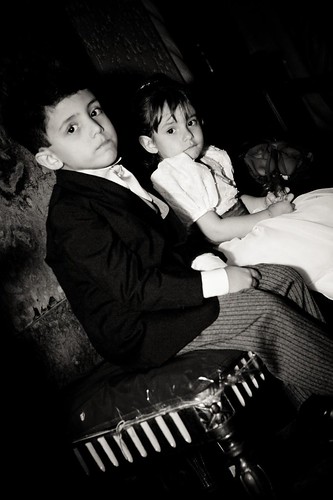
Image : http://www.flickr.com
The father walking with his daughter down the aisle and handing her over to the arms of her future husband has been a customary act for a long time. This tradition represents a father giving his priceless daughter to a man who will respect, honor, and love her for the many years to come. Nevertheless, this culture isn't usually followed nowadays as many women are getting married at a later age. Furthermore, there are situations where a woman already has a father and a stepfather at the same time.
Today, there are customs that are being designed which are very different from before. These practices take into account the fact that families nowadays have been revised, and that the bride and groom would want to illustrate their character. The bottom line is, it doesn't really matter who goes with the bride down the aisle. What is more vita is that the bride is happy and contented. Below are a few of the refined practices that are related to wedding walks.
Certain replacements of walking with the bride down the aisle can be made if the father is already deceased or is not present in the bride's life. Persons who can replace her father could be a stepfather, an uncle or a brother. If the bride feels really close to her mom, the mother could even walk with her.
In the Jewish tradition, the father and mother walk with the bride down the aisle - a tradition that demonstrates the love that they had endowed their child with and the effort they gave into their daughter's childhood and adolescent days. Several brides from any religions are taking a hint from this practice and prefer to have both parents be with them as this tradition provides their appreciation and the love, care and effort they've given her throughout her life.
If for any reason both the father and the stepfather were very important in her life, she may select to have both walk with her down the aisle. Preferably, the biological father may walk the bride halfway down the aisle and the stepfather will the walk with the bride the rest of the way. Through this, the bride is able to show her love and her appreciation for both fathers.
If the bride is at a later age, it is somehow uncomfortable to her having her father walk with her down the aisle. During these times, a bride walking down the aisle by herself is a common practice. This demonstrates that she is independent enough to make her own decision to get married with the man she loves. If the bride was previously married and had children, she may select to have her son or daughter walk with her down the aisle.
Some brides prefer to go down the aisle with their groom. This has also been a common practice, especially if the couple feels that they have already created a strong commitment from one another whilst being independent from their loved ones. The bride and the groom may go down the aisle together to illustrate their unbreakable love to one another. Sometimes, the groom may also meet the bride halfway down the aisle, to denote their union on middle ground.
The bottom line is what really matters to the bride's decision. Her choice is either following the traditional type of wedding walk or something that is newly improvised. The wedding walk alone is an intense moment for the bride; an indication of the alterations that her life will experience being a wife. The bride should select well with the wedding walk that is suitable to her and to her individuality the most.
Destination wedding ceremonies are a big trend these days for those who want to get away for something exotic, and maybe some of the stresses of planning a local wedding. It could also be a money saver - so much so that you can consider the more expensive engagement rings.
0 comments:
Post a Comment